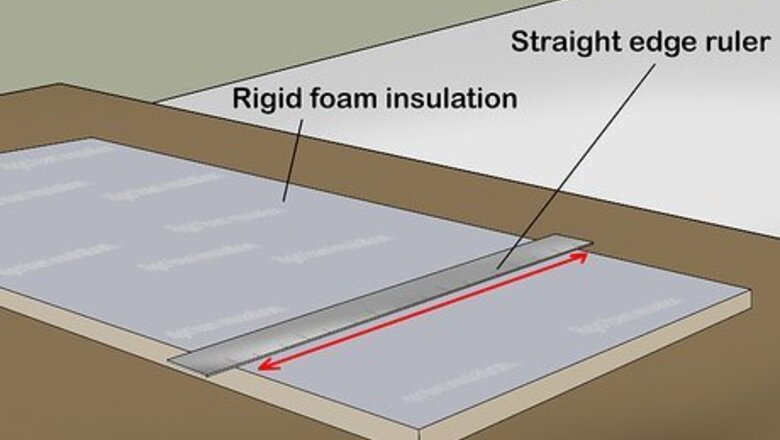
views
Readying the Cut
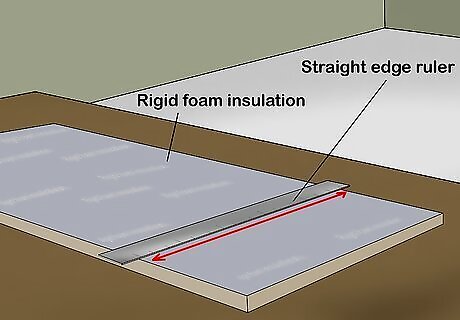
Measure your cut with a straightedge ruler. If you're cutting the rigid foam for a specific project, measure the length and width you will need it to be. Compare these dimensions to the length and width that your rigid foam insulation currently has to make sure it's long and wide enough. For more precise measurements, check the length and width 2-3 times.
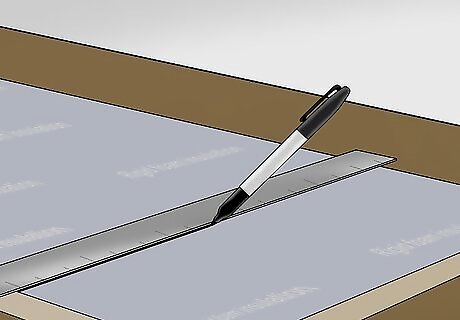
Mark your cutting line on the foam with a permanent marker. Place your straightedge ruler on the rigid foam insulation and use it as a guide while you make the mark. Draw a line with your permanent marker along the side of your straightedge, then check the marking to make sure it's precise. It's better for your markings to be a few inches or centimeters too large at first than too small. You can always cut more foam later, if necessary.
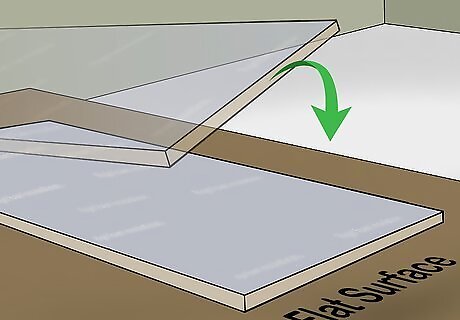
Lay the rigid foam insulation on a flat surface. Keeping the board flat while you cut will help you make a precise cut. If you don't have a work table, find a flat and smooth surface for cutting your foam insulation. Do not cut rigid foam insulation on decorative tables unless you lay out a protective barrier, like a knife block. You risk accidentally scratching the table.
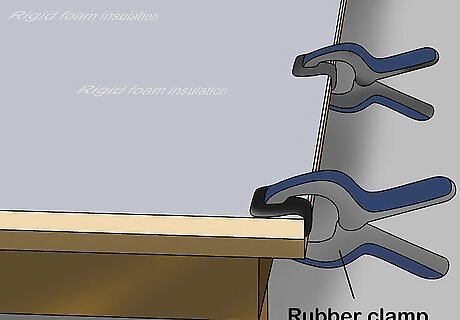
Clamp the rigid foam to the flat surface. Use rubber clamps to secure both sides of the insulation to the work surface. Secure the straightedge alongside the cutting line to help you make a precise incision. This will keep the rigid foam insulation from shifting or sliding while you cut it.
Cutting With a Utility Knife
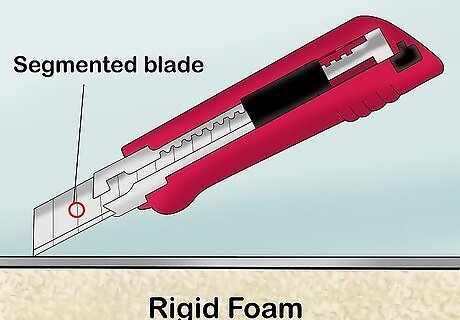
Use a segmented blade to cut your insulated foam. Segmented knives have ridges running along the bottom of the blade. Utility knives with segmented blades tend to cut rigid insulation foam more cleanly than other options. You can purchase segmented blades online or at most hardware stores. Segmented blades are also known as box cutters.
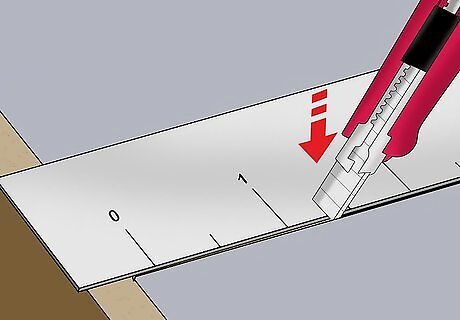
Score the insulated foam with your utility knife. Run the utility knife along the edge of the straightedge, working as closely along the cutting line as possible. Cut closer to the outer edge of the line to prevent cutting too much foam.
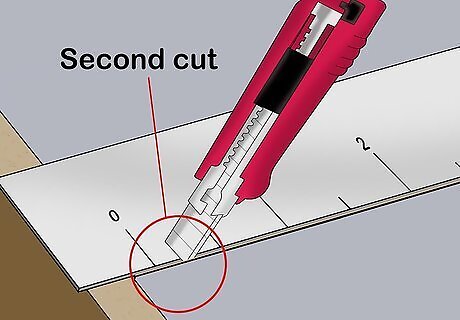
Make a second cut to finish the incision. In most cases, scoring the insulation foam once will not remove it completely. Run the utility knife through the line a second time to separate it from the rest of the insulation piece.
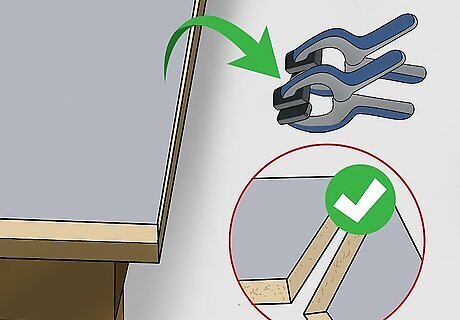
Remove the clamps and examine the foam piece. If the cut looks uneven or the piece is larger than what you need, draw another line, secure the foam piece with the clamps, and make another cut. But if you're satisfied with how the cut looks, your rigid foam insulation is ready for use.
Using a Saw Instead
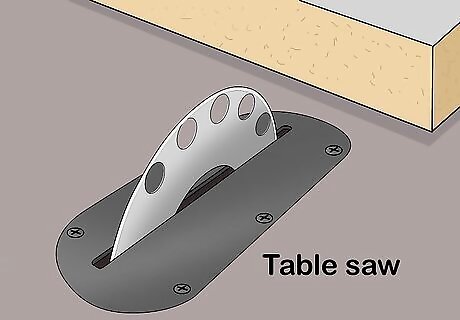
Use an electric saw instead of a knife if you need a precise cut. Although utility knives efficiently cut rigid foam insulation, table saws offer a cleaner, smoother incision. Buy or rent a table saw if you need the rigid foam insulation to fit exact measurements. Table saws are, however, a pricier option—their cost can range anywhere from $150-400+ USD. Although most table saws work well for cutting foam, you can purchase a specialized foam cutting saw online or at many home improvement stores.
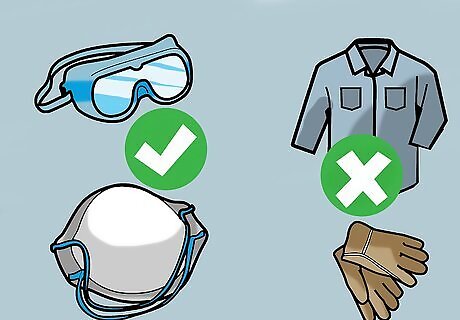
Put on protective gear before handling the saw. Safety goggles, glasses, or a face shield can protect your eyes from flyaway foam. To protect your lungs from foam dust, wear a dust mask or respirator while you work. Avoid wearing long sleeves, ties, jewelry, or loose-fitting clothes while using the saw. Never wear gloves while operating a table saw. Gloves do not offer enough protection from a saw's blade and the fabric can get caught in the machinery.
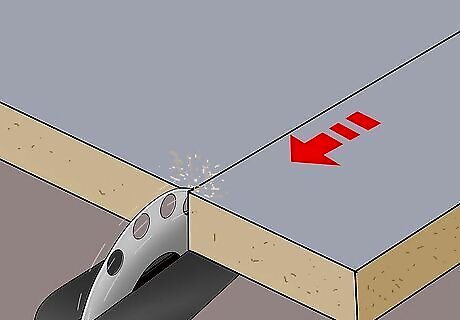
Run the saw's blade through the marked line. If you're using a handheld saw, hold it steadily in your hands as you guide the blade through the line. For table saws, do not clamp the foam and push it through the blade instead. Always keep your hands at least 6 inches (15 cm) away from the blade at all times. Read your electric saw's instructions before using the saw to make sure you use it safely. A handheld circular saw, one with a 4 to 4.5 inches (10 to 11 cm) blade, can also be used to cut through the insulation.
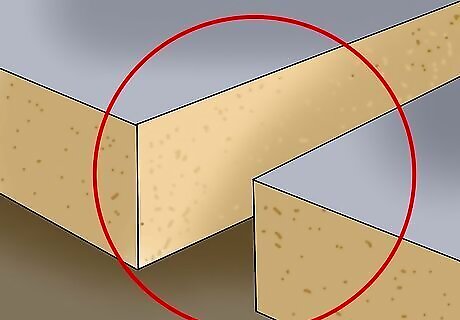
Check your rigid insulation cut for errors. If the insulation still seems too large or if the cut looks uneven, make another cut with your electric saw. If not, brush off any residual foam dust and use the cut insulation foam in the project you need it for.
Trying Other Options
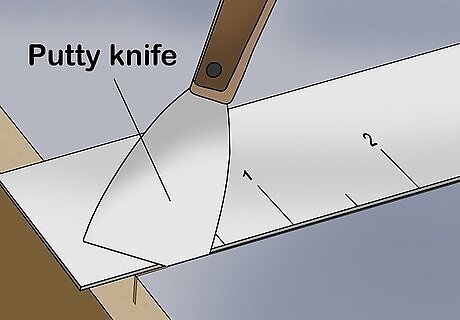
Use a putty knife to cut the foam. If you don't have a utility knife, a putty knife can work as an alternative. Sharpen the putty knife to give it a pointed edge, then use it in place of your utility knife as you cut through the foam.
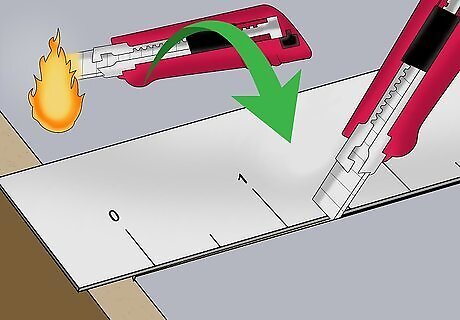
Heat your utility knife before you cut with it. Heating up the knife with a flame beforehand tends to result in a smoother cut. Hold the knife underneath a lighter for several seconds, then use it as you would a cool utility knife. If you heat the knife beforehand, use safety precautions around the fire. Handle the knife with a fire-resistant pair of gloves to prevent burning yourself.
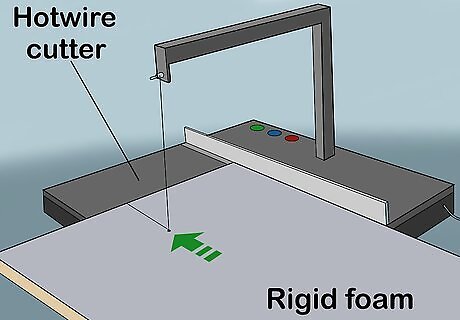
Try cutting the foam with a hot wire cutter. Hot wire cutters are ideal if you need to make straight cuts. Push the foam through the hot wire cutter's blade, carefully keeping your hands away from the wire blade. If you don't currently have a hot wire cutter, you may be able to rent one from a hardware store.

















Comments
0 comment